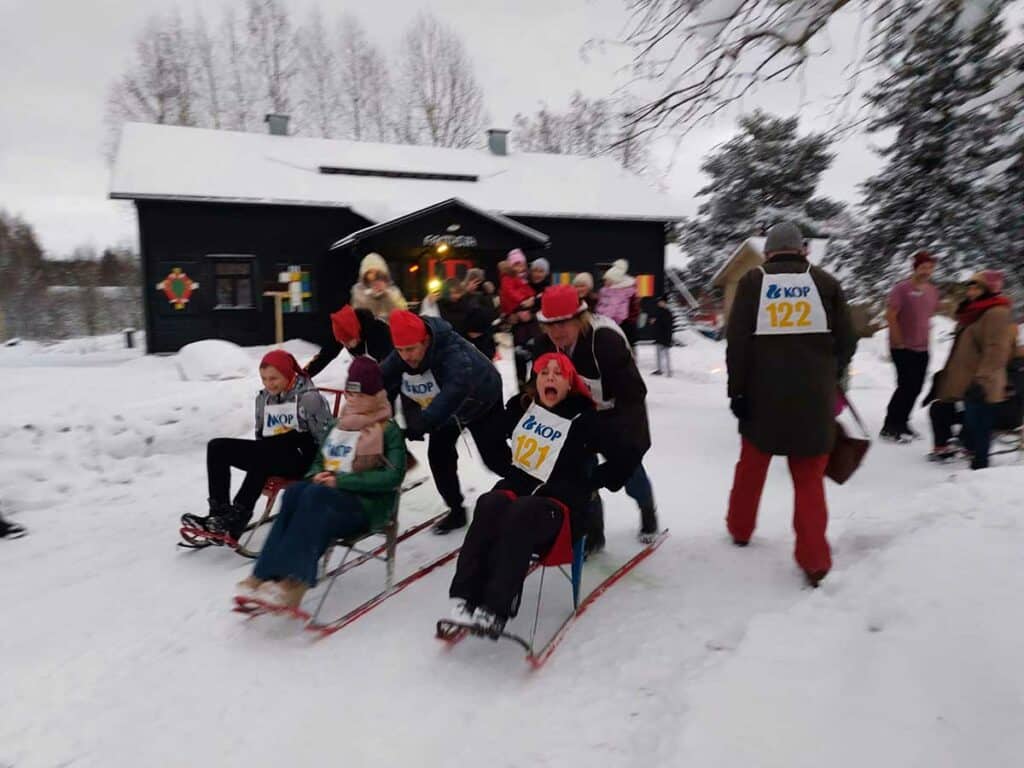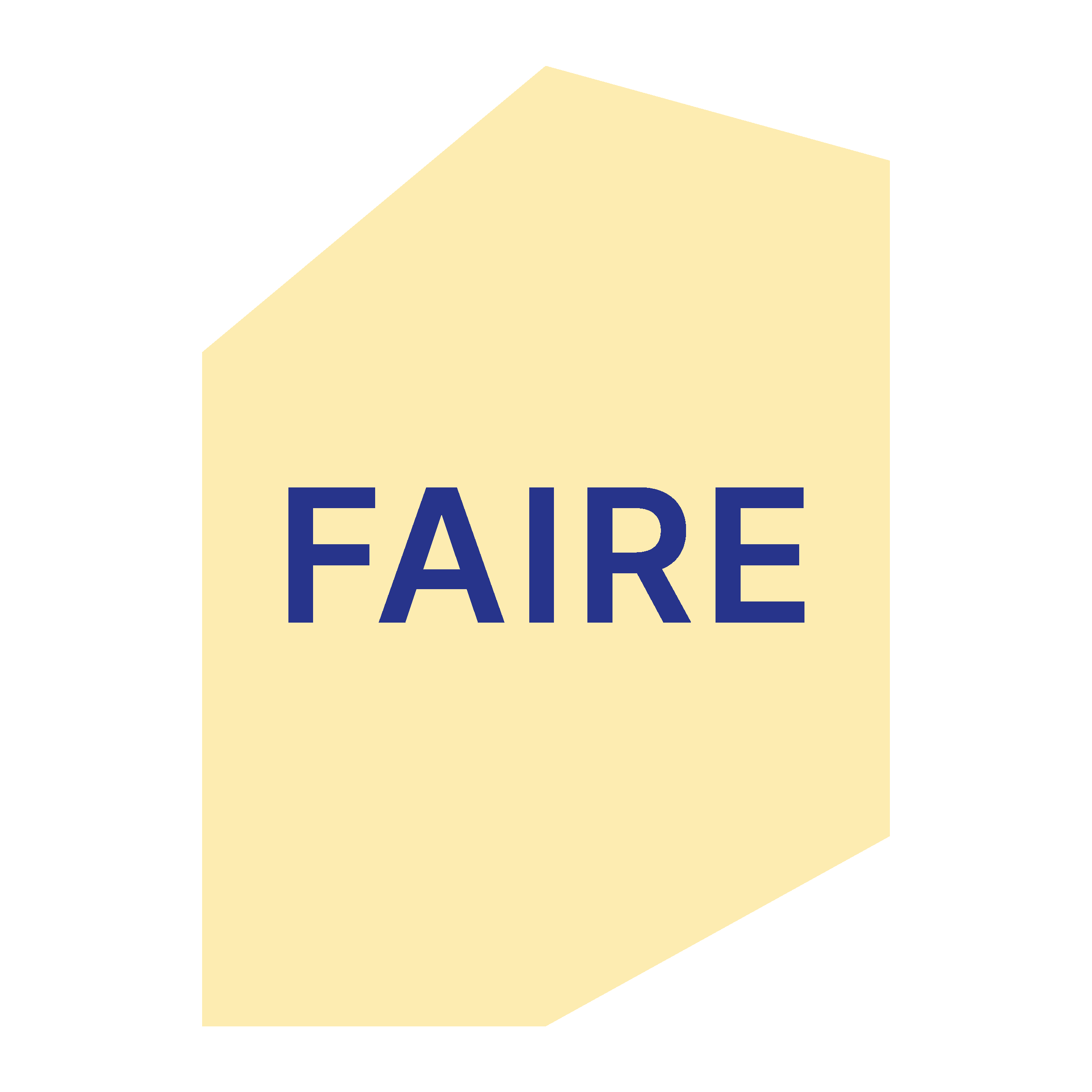13.2.2023
Interview: Petra Vehviläinen
Images: Annina Mannila ja Mimosa Pale
The article is part of a series of interviews which presents various Finnish residency providers and examines the role of residencies in the field of art and in the society.
Interview with Risto Puurunen, Executive Director of Haihatus, Maija Sydänmaanlakka, responsible for residency activities, and artist/volunteering host of residency Anna Miller.
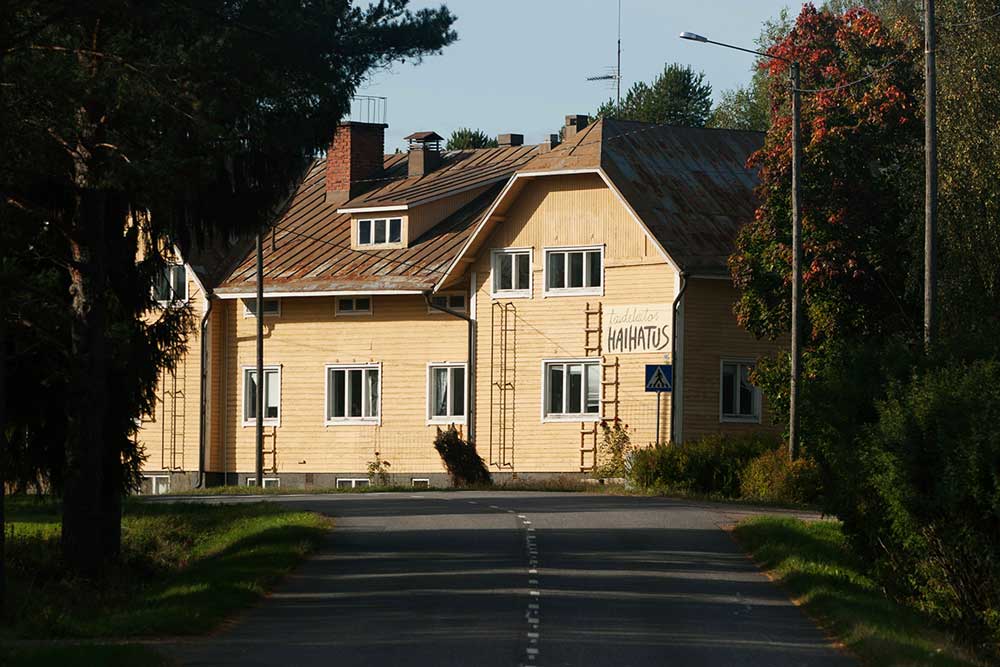
Haihatus is a vibrant contemporary art centre located in the municipality of Joutsa in Central Finland. Haihatus is a year-round venue for various art exhibitions, concerts and events. In addition, Haihatus offers residencies to around 30-40 foreign and national artists per year. The residency is open to artists from all artistic disciplines, and offers not only accommodation but also a framework for a wide range of artistic practices.
Anna Miller, a residency worker, explains her own experience, first as a guest artist and then as a volunteer: “During my two months here as a resident artist, I was impressed by the facilities of the place. I’m a crossmedia artist using different materials in my works. At Haihatus you have access to practically anything you can find. There are a lot of different materials and tools. Volunteers will help you use the tools and equipment, tell you where to find them and instruct you on how to use them safely. There’s lots of paint, wood, canvases – all available for artists to use. And lots of spaces to work in.” Risto Puurunen, Executive Director of Haihatus nods and continues: “We have power tools and equipment and, among other things, a wood workshop with all the basic woodworking supplies.” According to Puurunen, they also have welding equipment that can be used outdoors in the summer, but there is no actual metal workshop. “We have two buildings for the artists to use all year round and then a third unheated building that serves as an exhibition space in the summer,” he says. “But we did have an exhibition there this November – a very ‘cool’ exhibition,” says Maija Sydänmaanlakka, in charge of the residency, with a laugh. She is responsible for residency activities, alongside Mimosa Pale.
One of the buildings is equipped especially for musicians and performance artists. It has the necessary lighting and sound equipment. “I’m a musician myself, so maybe that’s why we’ve branched out in that direction too,” Puurunen smiles and continues, “We have a full sound system and equipment for studio work as well. If the musicians bring their own instruments and equipment, it’s very easy to record there. The acoustics, atmosphere and spirit in the old wooden room are very good. It’s a great place to rehearse music, theatre and performances.” The artists also have access to video projectors, video, image and sound editing equipment and softwares, and facilities to use them. “We should make a proper list of all our equipment one day. Sometimes I can’t even remember everything we have,” Puurunen laughs.
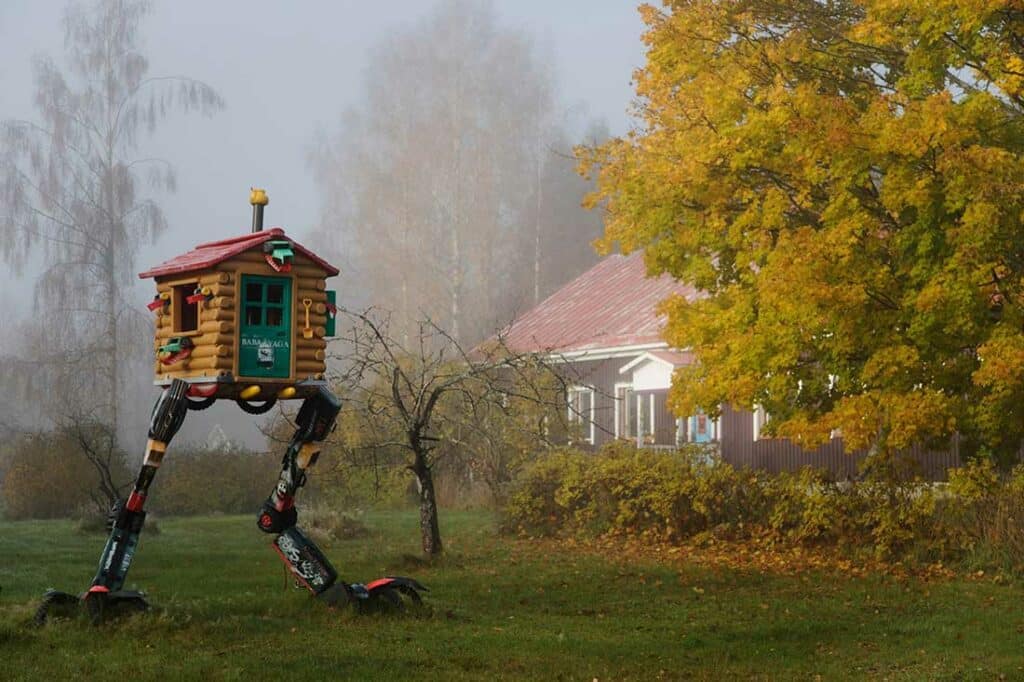
In addition to impressive equipment and working facilities, Haihatus also provides a socially vibrant environment for the residency guests. In addition to the rotating residency guests, the house is staffed by a team of volunteers, the residency team. The team consists of ten people in total, all with different tasks. Two or three people act as hosts, or residence workers, who run the practical side of the house and help guests. Some volunteers organise events and meetings, and take the residents on day trips to Jyväskylä, Helsinki or Tallinn to see exhibitions or attend events. Some team members focus on planning and coordinating the residency’s activities and future. All volunteers also work on their own art projects. They use the facilities, equipment and tools, stay in the house and work freely on developing and sharing their own projects.
The social intensity of the place is enhanced by the various events organised in Haihatus, which the artists-in-residence can participate in if they wish. “At the residency you are not only working on your own project, you also have the opportunity to show and share your work with the people around you. I see it as a great opportunity,” says Miller. Puurunen continues, “We can organise different pop-up events and exhibitions. We even manage to get an audience for some of the events,” he laughs. “Some artists end up taking part in the summer exhibition, which is our biggest annual event. Including the concerts, we have around 5,000 visitors each year. We also have 1.5 hectares of outdoor space for artists to use. So if someone wants to build a sculpture in the outdoor space, we can easily find a corner where it can stand for the next couple of years or forever,” he says with a smile, and continues, “But it’s such a big environment that if someone wants to work in privacy, that’s possible too.” Sydänmaanlakka says that when renovating the small kitchenettes in the guest rooms, they often joked that “if someone longs for solitude in the Finnish way, then because of the kitchenettes they don’t have to leave their rooms at all if they don’t want to”, and continues seriously, “Sometimes, when there are a lot of social encounters and community activities, then you might long for the peace and quiet to concentrate on your own work. We try to make that possible too.”
There is also close cooperation with actors of the local community and the TUOTUO artist residency, just 10 kilometres away. Visits between the residencies are organised about once a month. These meetings allow artists to exchange ideas, present their working processes or works, and get to know each other. One of Haihatus’ values is to be an active member of the local community and to keep in touch with the locals. “It’s a very small place, so everyone knows each other. We are in touch with different local associations, we are present in local social media groups, we distribute posters of our events everywhere and invite people to visit us, even if it’s their first time. We try to be a very low-threshold place,” says Sydänmaanlakka. “If we have an event, the local newspaper always does a small story about it. Last weekend we had the opening of the Kinetic art gallery KITA and the community winter event LumiKita that attracted 200 people over the course of a day, building snow castles and frying sausages,” says Puurunen.
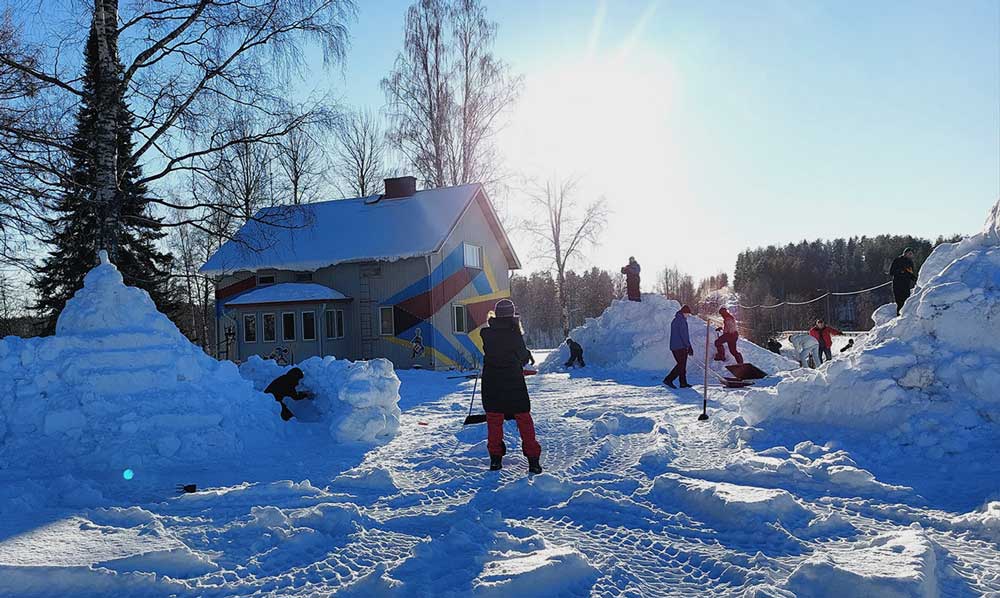
Haihatus also runs various community art projects, such as Voimametsä, a low-threshold participatory and anti-exclusion art and environment project. Puurunen also says that “there are a lot of Ukrainian refugees in Joutsa and we have started to organise events open to all, where we welcome them”. Artists in residence are also welcome to participate in the projects. “It is important to bring local actors: residents, leisure residents, the 200 Ukrainian refugees who have moved to the area with the new reception centre, and international artists-in-residence together in a common space to make things happen. Art and art workshops act as bridges between residents, refugees and artists. We do things together, and at the heart of it all is art – in all its forms. Culture, local cultural traditions, contemporary art, kinetic art, all forms of art – we bring them together,” sums up Sydänmaanlakka. “For me, it’s all about integrating people: gathering them together and making art available to them so they can create together, and communicate – building a big friendly community,” Miller adds.
Residency is open to all professional artists and art students from all artistic disciplines. Open call for residencies lasting between one and three months is held every six months and every applicant will be considered for a residency. “If we don’t have enough space, we will try to offer a place at a later date. We don’t have any specific themes or needs in terms of the content of the artist in residence’s work,” Puurunen explains the selection process, “we read through the applications and see if we have the facilities that the artists needs.” “The most important thing is that the artist wants to come to Haihatus, it’s special atmosphere, not where they come from,” Sydänmaanlakka adds.
Haihatus has a safer space policy in place for all its spaces and events. According to Puurunen, Haihatus welcomes everyone who is willing to commit to its values, which include not only equality and non-discrimination, but also socially and ecologically sustainable practices. Haihatus aims to recycle all materials and has two large warehouses for artists to collect all materials deemed suitable for reuse.
Sustainable practices also include the care of buildings of cultural value. “These old hospital buildings have been given new life. There is a great atmosphere in their history and the layers of history,” says Puurunen. “The challenge we face is that it takes money and resources to maintain the old buildings,” says Sydänmaanlakka, “so the hope is that we can increase the funding so that people can be paid for the work they do. Although I have to stress that there is an incredible power and uniqueness in people doing voluntary work, you can’t rely on that for the long term. At some point the question arises that if someone does a lot, why not pay them for it. Now the answer is that there is no money.” The hope is also to find funding for residency based on invitation, so that the residency fee can be waived, housing can be provided and a basic allowance can be paid. The additional resources could also be used to reorganise the house’s energy system to make it more ecological. According to both Puurunen and Sydänmaanlakka, all this will require long-term development work, for which they and many volunteers still seem to have the enthusiasm and willpower. Miller sums up Haihatus’ values, “For me it’s about freedom. It doesn’t matter who you are, whether you’re a young artist just starting out or have been doing it for a while. There’s no valuation of what you are doing, you are welcomed and free to create. It’s amazing! You get so much support, people are accepted as they are.There is an appreciation for others and for surroundings.”
Finally, the Haihatus people want to send an important message to artists and artist groups in Finland: “For some reason, Haihatus is perceived primarily as an international residency, that people come from abroad, even though the residency has been in operation for ten years and is open to all. But this is a great location, for example from Helsinki: there are great rehearsal facilities, the possibility to stay overnight, and to come for an intensive weekend. Whether it’s a band, a free field theatre group, a dance group, a contemporary circus group – you’ll find facilities and accommodation here, and it’s only a two-hour drive from Helsinki. We have work to do, to get people in Finland to find us.”
